3D visualization building-integrated photovoltaics (BIPV)
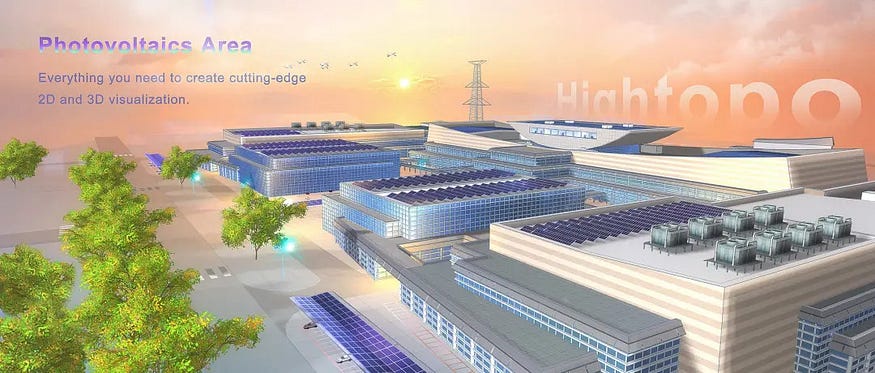
Solar power is clean, limitless and widely available. It’s also getting cheaper. But as with any large system with multitudes of parts, reliability is key. Digital can help. This article introduces a 3d visualization system to monitor the photovoltaic park using ht.js from Hightopo.
Hightopo independently developed a powerful 2D & 3D graphic rendering engine based on HTML5, provided a rich display format and effects for web visualization. Special focus on the Industrial Visualization, Digital Twin, Web SCADA.
3d visualize PV park
The concept of Building-integrated photovoltaics (BIPV) refers to the integration of technology, — refers to the capacity of the photovoltaic (PV) system to be multifunctional — aesthetics — refers to the architectural appearance of the system — , and energy integration, meaning the capability of a PV system to interact with the building and district energy system to maximize the local use of electricity generated.
The BIPV systems can be divided into three main categories:
· PV modules, with specific characteristics, developed for building integration, with appealing features (such as colour, texture, shape, surface finishing, and light materials) conceived for integration in existing buildings.
· Mounting systems, to mount the PV modules on the building envelope, such as on facades, roof, and external devices.
· Energy systems, which link the PV modules to the building and district energy system to maximize the local use of the electricity generated, including storage, power conversion, power control, heating and cooling and e-mobility systems.
Weather Simulation
By utilizing satellite images, aerial views of the property, CAD drawings, on-site photos to create the 3d models, and by using different texture to simulate different seasons( spring, summer, autumn, winter), simulate different time(morning, noon, evening, night) and simulate weather(sunny, cloudy, raining, snowing).

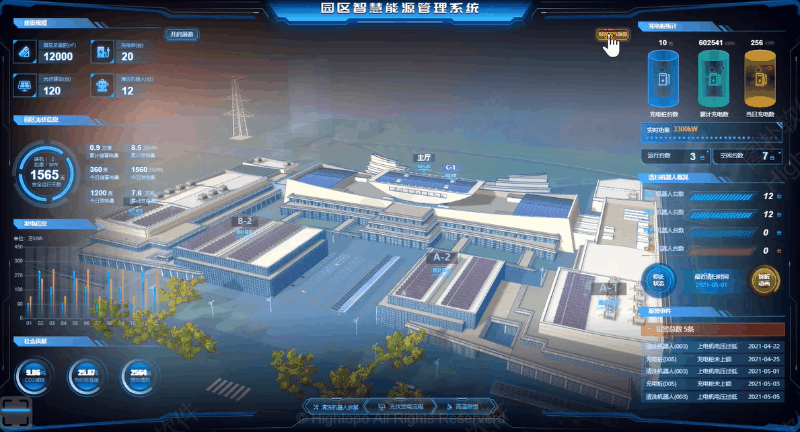
Furthermore, HT visualization system supports integrated with weather data to enable automatic switching of environmental simulation content based on actual weather data.
Visualize Photovoltaic Effect
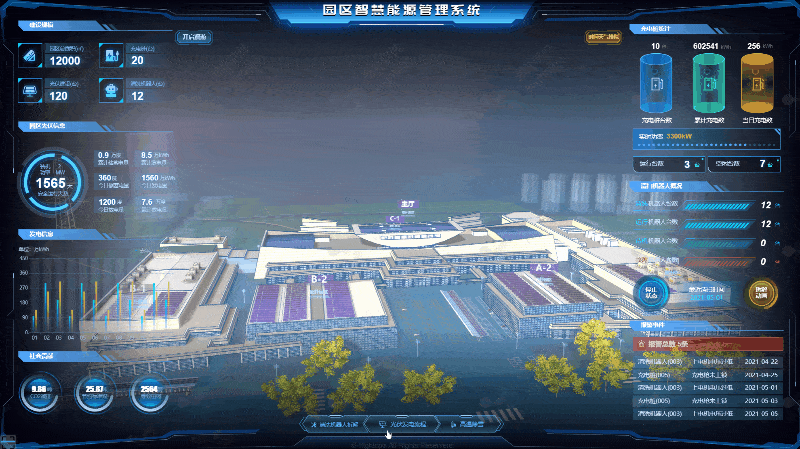
A standard solar panel (also known as a solar module) consists of a layer of silicon cells, a metal frame, a glass casing, and various wiring to allow current to flow from the silicon cells. Silicon is a nonmetal with conductive properties that allow it to absorb and convert sunlight into electricity. When light interacts with a silicon cell, it causes electrons to be set into motion, which initiates a flow of electric current. This is known as the “photovoltaic effect,” and it describes the general functionality of solar panel technology.
The scene is displayed in a sci-fi wireframe style, highlighting the equipment model, and showcasing the whole process of photovoltaic conversion from light energy to electric energy, power supply to equipment, and energy storage through the flow of lines.
EV Charging Point

Utilizing 3D animation and real-time data to monitor the operating status and real-time power of the EV charging point in the park. Data are visualized in a more intuitive way, for instance, we can determine whether there are vehicles in the current parking space, and the charging status can be simulated through the animation of line flow effects.
When the charging point fails, the corresponding model will be dyed in red colour with warning animation, so that the operators can get a better insight into what’s happing on the site and act faster to reduce the downtime.
Cleaning Robots Animation
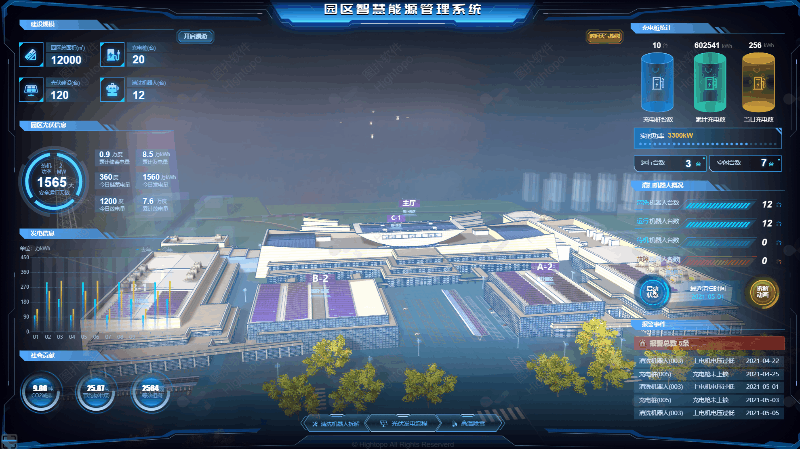
Due to the photovoltaic effect, the deposit of dust on the surface of the panels will responsible for obstructing the integral access of sunlight to the system. Therefore, in order to maintain the photovoltaic panel's energy efficiency, using robots for cleaning panels becomes a good go for most solar park.
The cleaning robot is composed of brushes, motors(for brushes and wheels), wheels, photoelectric sensors, and aluminium pipe frame. The robot walks along with the PV panel, high-speed spinning brushes will dust off the surface for cleaning purpose.
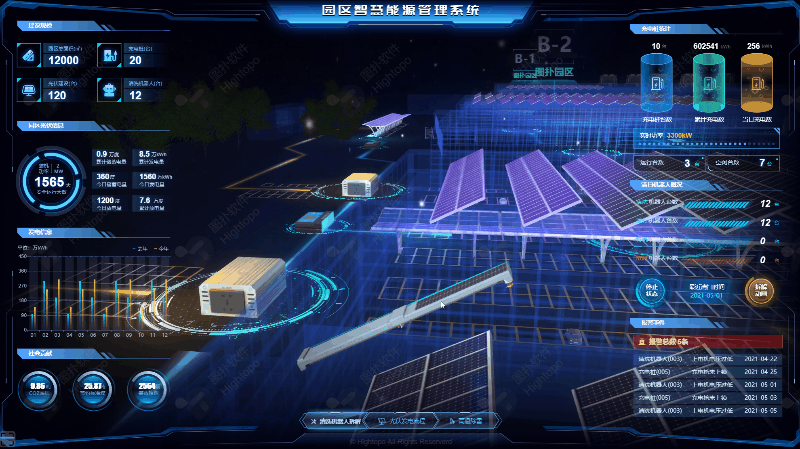
VR Roaming Walkthrough
HT for web support drone view or first-person walking view to roaming walk through the park and It’s also VR supported. With the VR device, operators and maintainers will have an immersive experience to inspect the park and spot unusual status.
Hightopo HT for Web is a lightweight, cross-platform, responsive, fully interactive digital twin solution. Empower clients to turn real-time data into insights for better, faster decision making. As the nature of the web-based feature, there’s no need for plugins or downloads, it just works seamlessly on any modern browser & device. With more than 10 years of industry experience, we have collaborated with more than 1000 clients from various industries.
- Government (Local and Central)
- Transportation
- Financial Services (Bank, Insurance Agency)
- Telecommunications (Data Center)
- Energy and Utilities (Oil& Gas, Wind Energy)
- Health Service (Hospital)
- Education (Institute, University)
- Real Estate